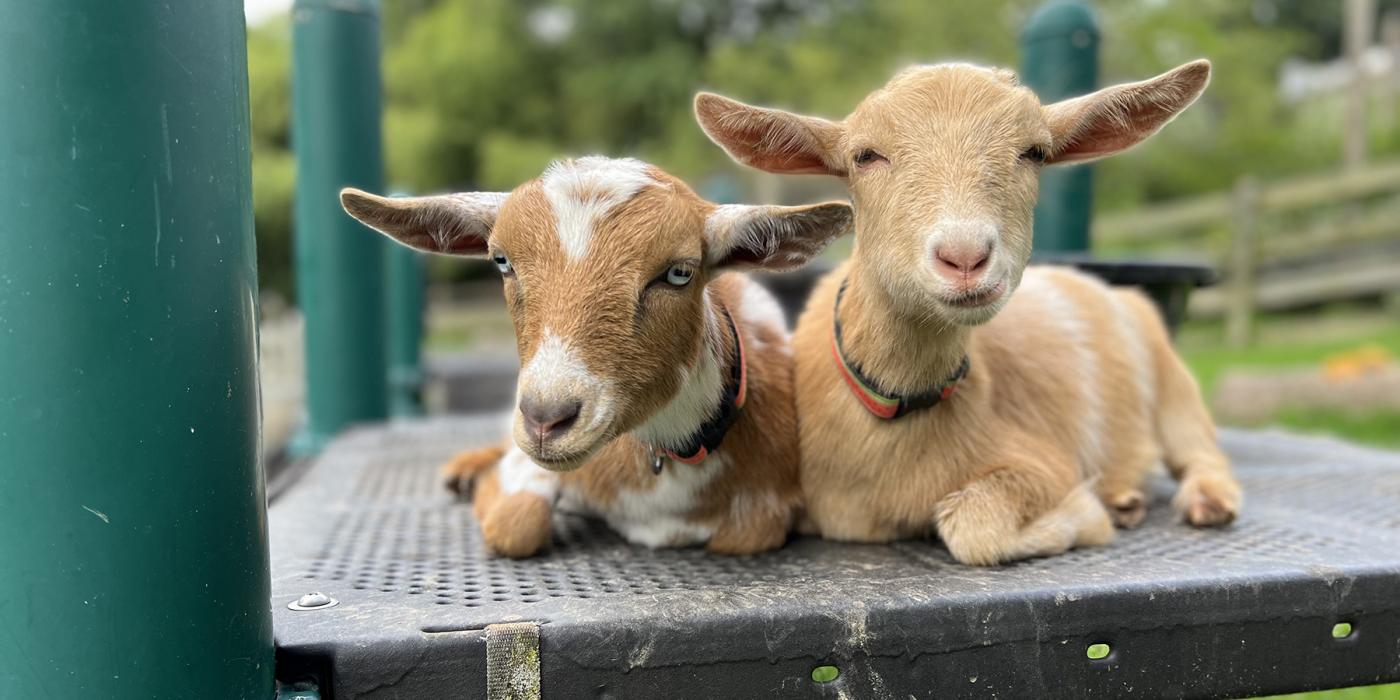A Day in the Life of a Kids' Farm Keeper
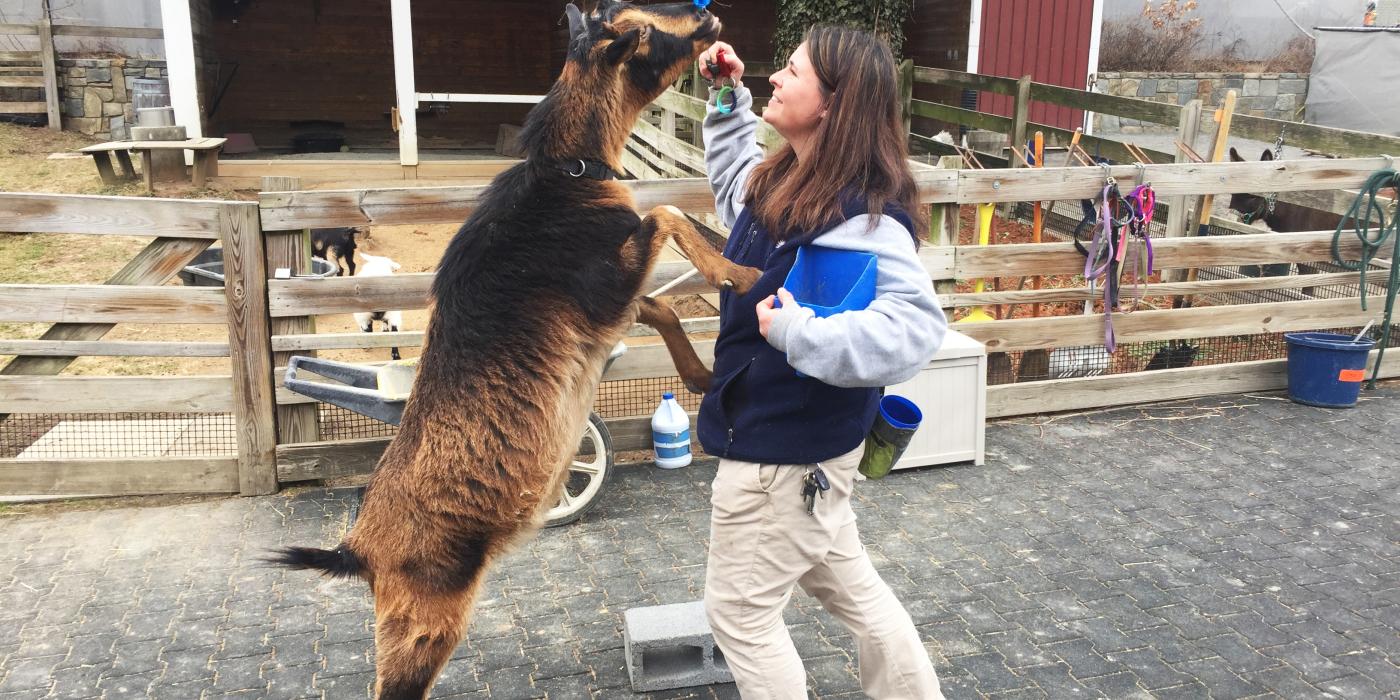
Hog Run l 7:30 a.m.
“Every morning, our Ossabaw Island hog sisters, Savannah and Carolina, run from their night house to a yard next to the barn. Before we let them out, we scatter vegetables—such as sweet potatoes, beets and green peppers—around their yard to encourage them to forage. We will also put puzzle feeders and other enrichment toys for them to play with and investigate.” —Nikki Maticic, animal keeper
Chow Time l 8:30 a.m.
“Melon is a favorite treat among our domestic chickens. For some added enrichment, we hang the fruit on a skewer or small rope. This creates a “tetherball” effect; the melon moves as they peck at it. In this slo-motion video, watch how focused Ygrette is while she picks out the seeds and innards of the melon. The chickens have similar drive and focus when they are knocking their puzzle feeders—which are filled with bugs and leafy greens—around the yard. By presenting their daily diet in this way, we encourage the chickens to keep active when they forage for food.”—Nikki Maticic, animal keeper
Nose to Nose l 9:30 a.m.
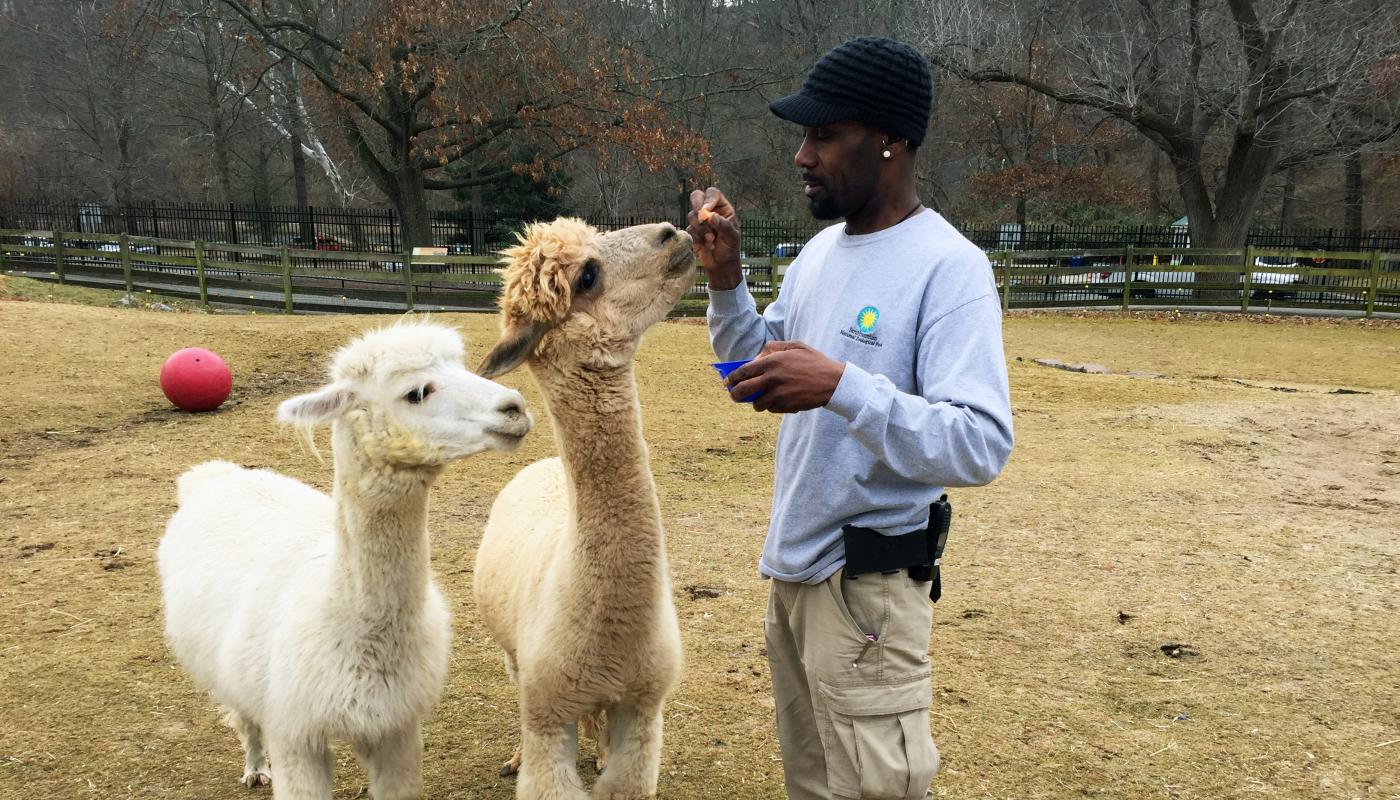
“We examine our animals’ health on a regular basis and look for certain characteristics that help us determine how they are feeling. Are their eyes bright and clear? Do they have any nasal discharge? Is their personality consistent with how they normally act, or is it “off” a bit? I do positive reinforcement training sessions with our alpacas, Orion and Cirrus. I will give them a cue to put their nose up to my nose and ask them to 'target.' If they do this behavior, I reward them with a treat. In this photo, their treats are carrot slices. If they choose not to participate in the training, they are free to walk away. Because of the nature of this training, I have to be on my toes and aware of their movements at all times. To build a trusting relationship with them, we practice the “target” behavior on a daily basis.” – John “JT” Taylor, animal keeper
Birthday Treats l 10 a.m.
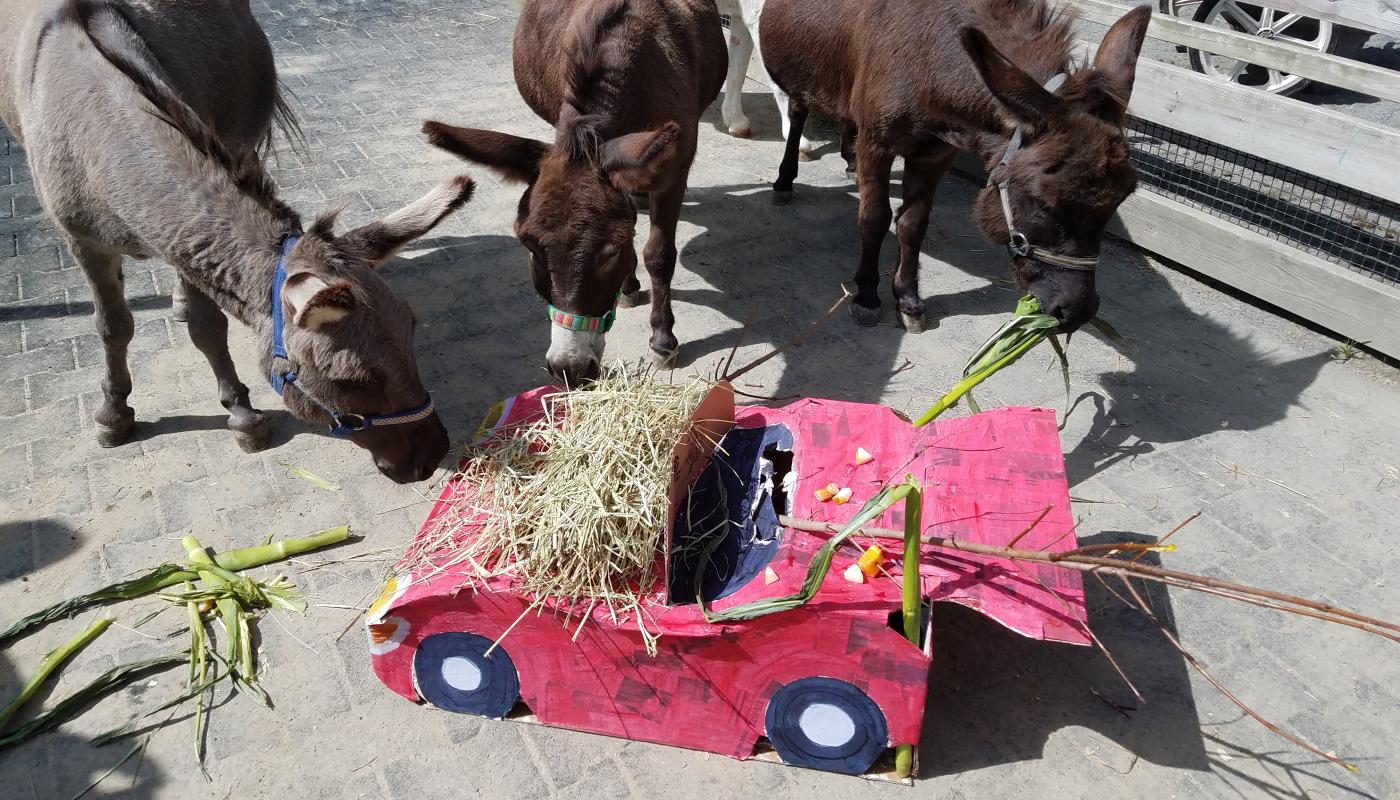
“Miniature donkey Pat is our oldest animal at the Kids’ Farm. For his sweet 16 last September, our colleagues in Friends of the National Zoo made him a papier-maché car, accessorized with corn stalks, oranges, pears and apples. Presenting the donkeys with their diets in a novel way helps us keep their day exciting and offers them a chance to use their foraging skills in a fun way.”—Nikki Maticic, animal keeper
Goat Hurdles l 1 p.m.
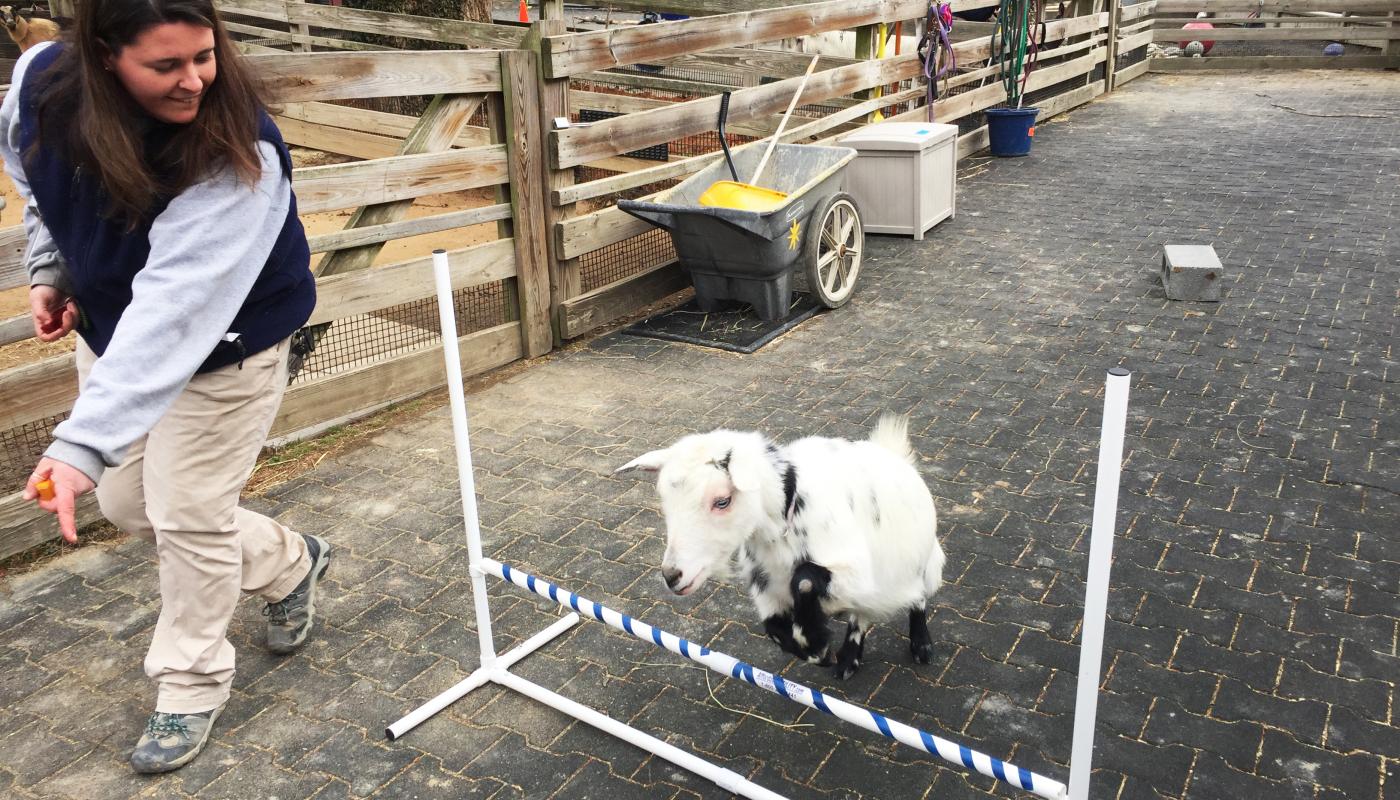
“Goats have specialized hooves for jumping and climbing. To show our visitors the goats’ amazing abilities and intelligence, one of our daily demonstrations focuses on agility training. When I give the cue, Nigerian dwarf goat Fiesta jumps over a hurdle. We have been working on this behavior for several months now. Today, she can clear a bar twice this height!”—Nikki Maticic, animal keeper
Goat Target Training l 1:30 p.m.
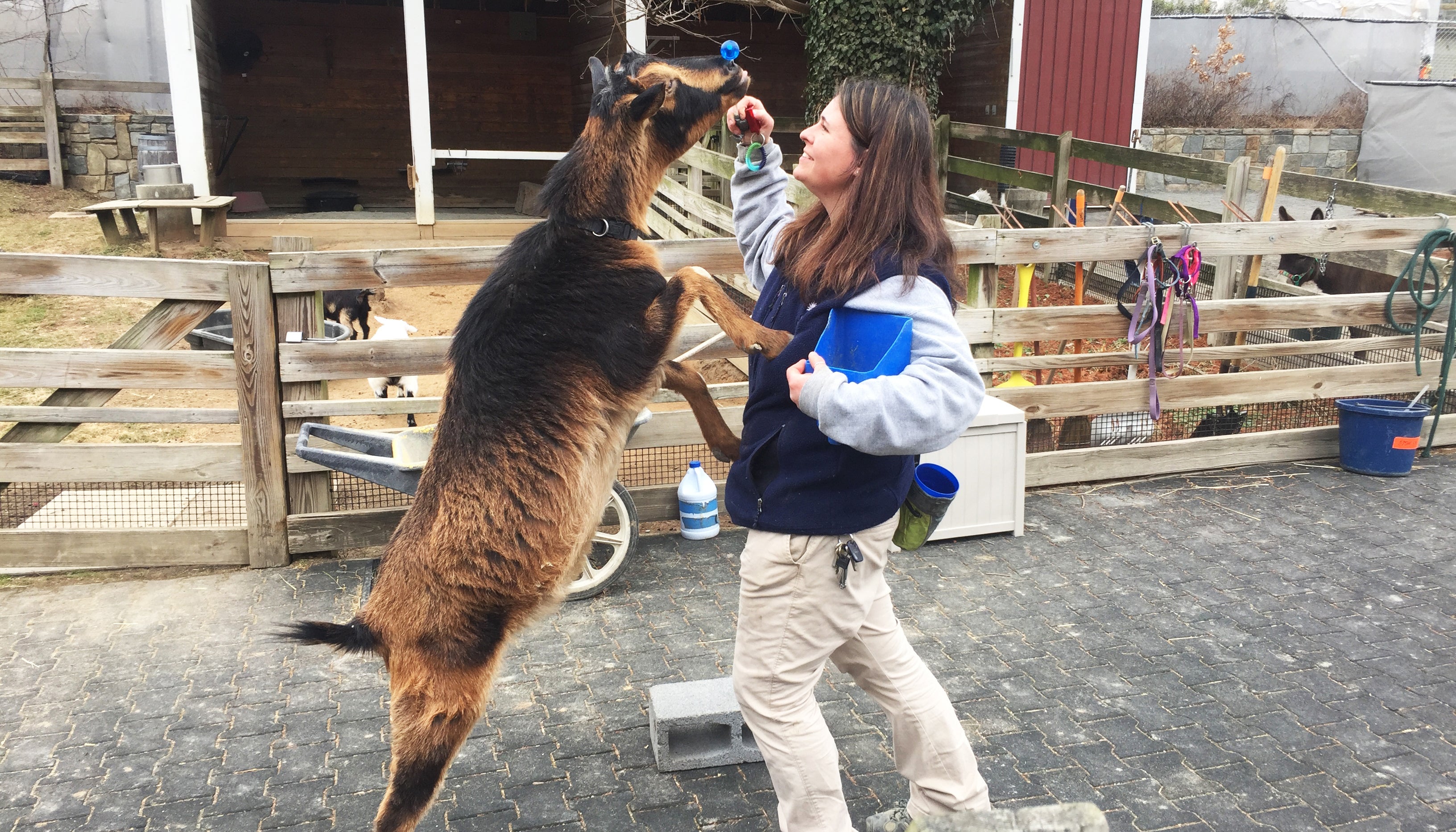
“The primary focus of our training is to have the animals voluntarily participate in their own medical care. Our male San Clemente Island goat, Mortimer, has a sensitive callus on his chest. When he is standing on all fours, it can be tough to spot. So, we ask him to show it to us using target training! He places his two front hooves on my chest while he touches his nose to the blue target ball. I am able to get a good look at his callus and note its condition. Using the same technique, I can also ask him to line up at the fence to check—and even trim—his hooves. Every time he does the correct behavior, I reward him with a treat. In a broader sense, these training sessions also help me gauge how well he is feeling. Morty is an older goat. On days where he chooses not to target train, he may be experiencing some joint sensitivity. Because our training programs are voluntary, he does not have to participate if he does not feel up to it.”—Nikki Maticic, animal keeper
Animal Encounters l 1:45 p.m.
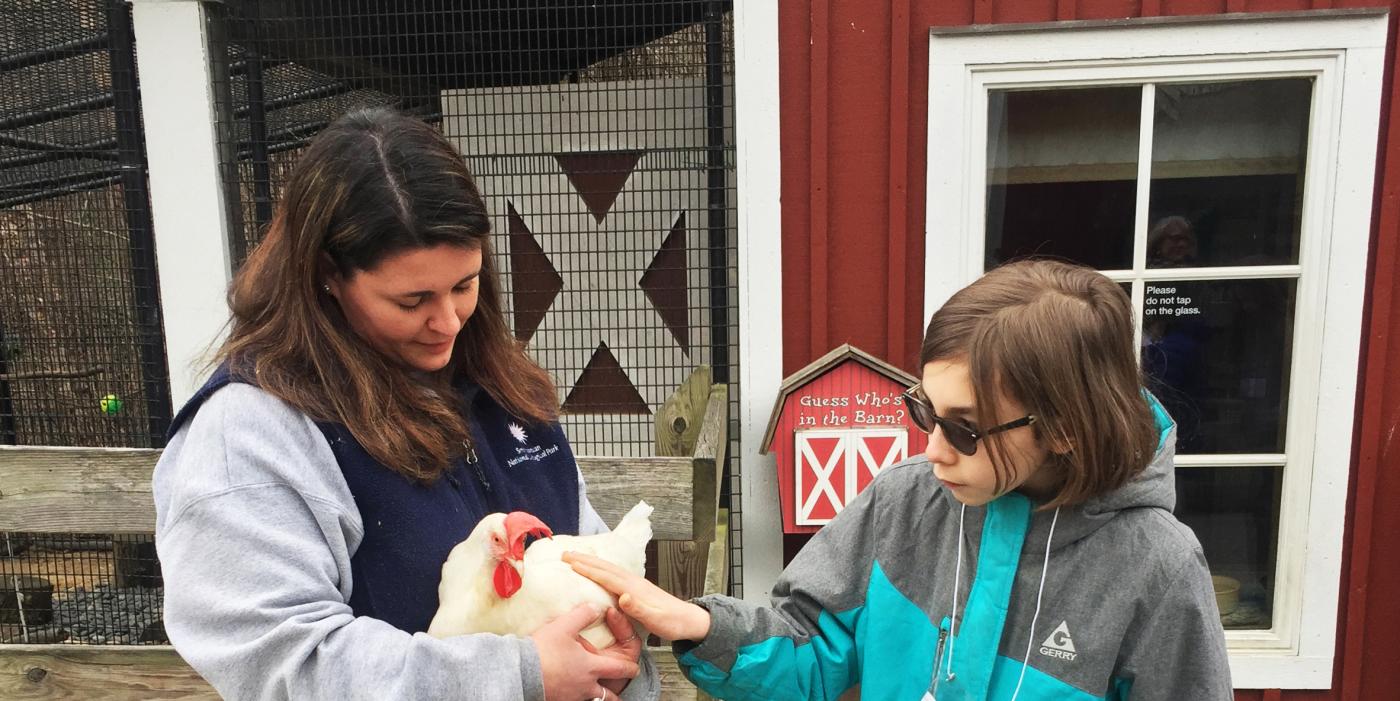
“The Meet-a-Keeper demo is a great way for visitors to get an up close look at the animals that call the Kids’ Farm home. These encounters can lead visitors to discover things they never knew about our animals. Many people who visit the Zoo from Washington, D.C. and other metropolitan areas have never interacted with a live chicken before, so it is exciting to introduce them to our seriema and leghorn-favorelle chickens. Visitors often comment about how soft their feathers are, and how much they remind them of dinosaurs. These demonstrations give us an opportunity to highlight their biology and behavior. Did you know that as a chicken scratches at the ground, its claws help reveal insects hiding beneath? That’s one of the reasons we sprinkle mealworms and crickets throughout their enclosures, so they can use their natural hunting abilities.”—Nikki Maticic, animal keeper
Donkey Husbandry Training l 2 p.m.
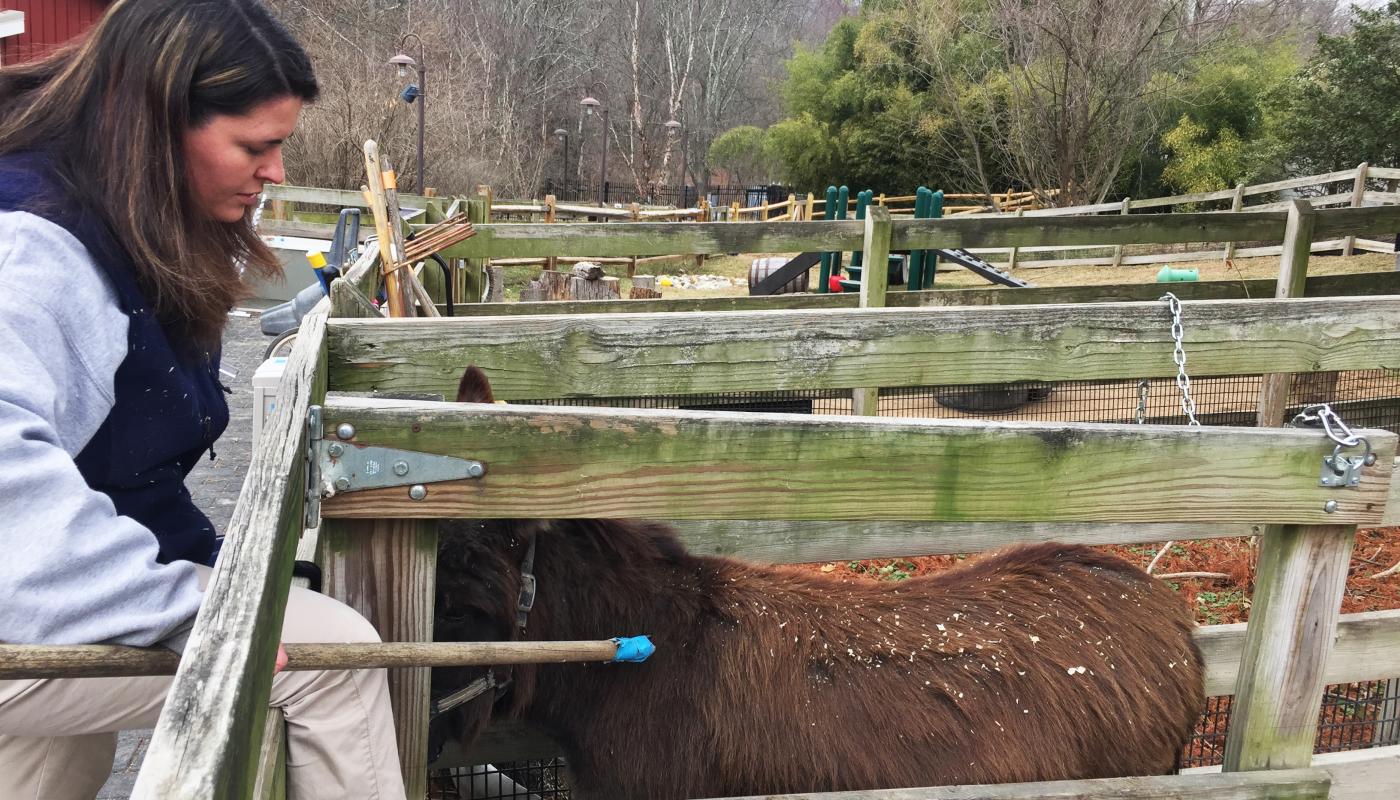
“Whereas goats pick up training very quickly, our miniature donkeys tend to be more cautious when it comes to unfamiliar objects and situations. Before we could start target training with the donkeys, we had to carry the training tools around in our pockets where the animals could see them. In this photo, I am getting Pat used to the sensation of being touched during medical exams; our goal is to make this experience as pleasant and stress-free as possible for him, so that when our vets arrive he is set up for success. To begin, Pat voluntarily enters a narrow, fenced-in area. Once he is all the way in, I will slowly push the door beside him. This door acts as a safety barrier between Pat and our vets. To simulate a vaccine or blood draw, I will gently touch a pole against his lower neck and his rear. He receives lots of praise from me and a handful of treats throughout the training.”—Nikki Maticic, animal keeper
Dental Check-Up l 2:30 p.m.
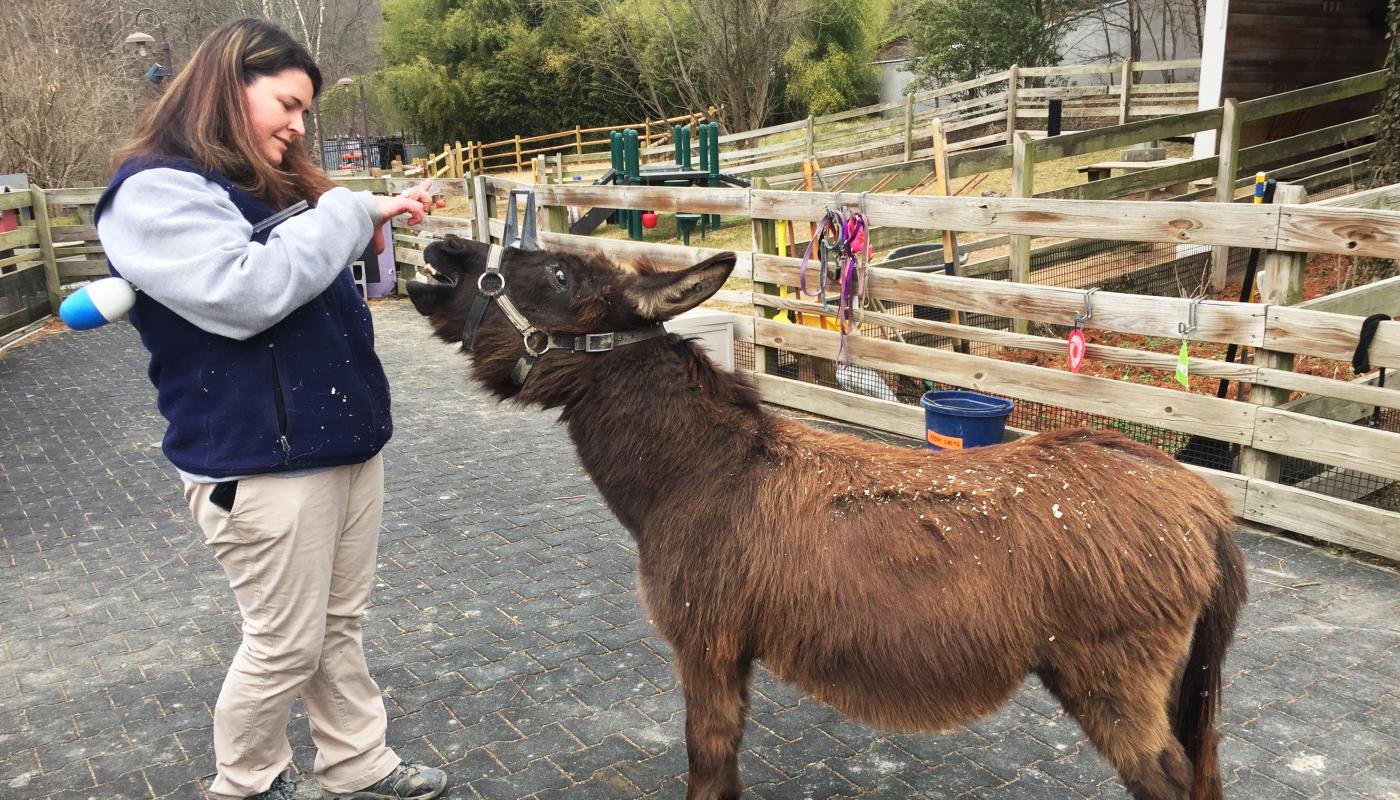
“Miniature donkeys Pat, Giuseppe and George are very food-motivated and typically jump right into training sessions. Flash always wants to be the first to train, but he is also the most nervous! The key to training him—or any animal, really—was to learn his mannerisms and preferences and tailor our training around those quirks. In addition to doing medical behaviors, all of the donkeys are trained to open their mouths on cue. This makes it easy for us and the veterinarians to get a good look at their teeth.”—Nikki Maticic
Painting with Alpacas l 3 p.m.
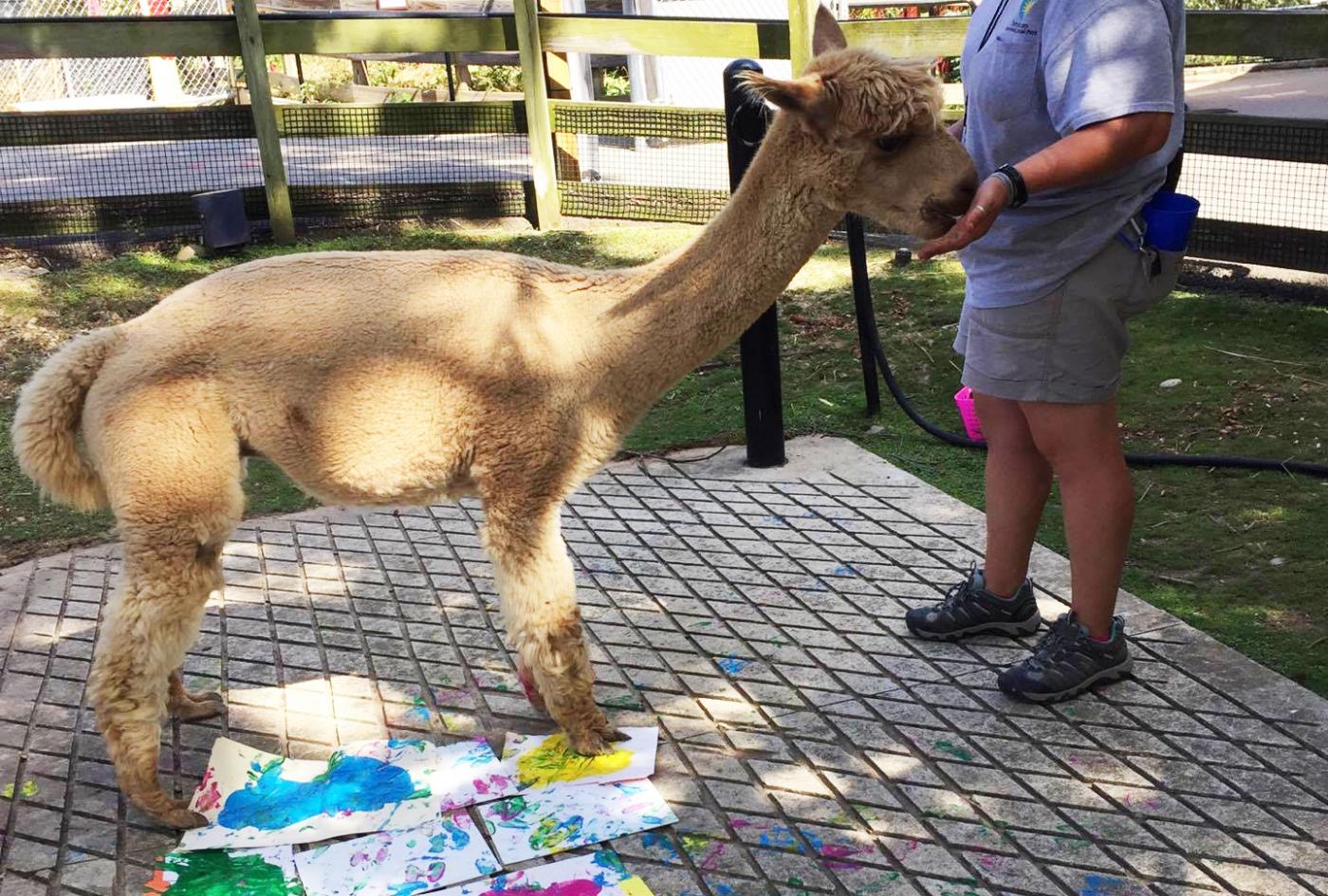
“Painting is a favorite activity of both animals and keepers at the Kids’ Farm. In this photo, alpaca Orion is stepping on paper covered with bright, colorful paint, then onto a blank canvas to create his masterpiece. Painting is visually engaging but also gives the alpacas something new and different to smell that is not food. Sometimes, they will sniff the paint and get it on their noses. So, if you see an alpaca with a pink nose, you know why! We use non-toxic, water-based paint for this activity, which is safe for the animals and easy to clean up when they decide to walk away. Typically, a painting session lasts anywhere from 20 to 30 minutes; their interest in painting varies from day to day. However, they seem to enjoy receiving a mist bath afterwards! The cool spray is especially welcome in the hot Washington, D.C. summers.”—Nikki Maticic, animal keeper
Scratching Post l 4 p.m.
“Brushes are among the animals’ favorite enrichment items. Not only do they offer tactile stimulation, but we can also spray different scents on the bristles to make them even more interesting and engaging. In this video, Hereford cow Rose is grooming herself using an upcycled street cleaner brush. As we move from winter into spring, the brush gives her an opportunity to get rid of any hairs she is shedding. They can also help to keep her clean in the winter when it is too chilly outside for us to give her a bath.”—Nikki Maticic, animal keeper
Hoof Pedicures l 5 p.m.

“Keepers are the first line of eyes and ears for the animals’ health. One of the ways that we monitor the donkeys’ health is to clean their hooves after we bring them into the barn every night. Just like how we humans clean our fingernails every night, we want to make sure that there is no debris or bacteria stuck in the hoof crevices. There are nerves in their hooves, so we have to brush thoroughly but gently.”—John "JT" Taylor, animal keeper
This story was featured in the April 2018 issue of National Zoo News.


